The latest trends for stage light in us 2026 | LQE Ultimate Insights
- Introduction: Why 2026 Matters for Stage Light Buyers and Producers
- Energy Efficiency and Sustainability: The Commercial Case for LED Stage Light
- Key commercial-intent keywords: buy stage light, LED stage lighting fixtures
- High-Brightness LEDs and Improved Color Rendition for Professional Stage Light
- Convergence of Lighting and Video: Pixel Mapping and LED Panels in Stage Light Design
- Table: Feature comparison — Traditional Moving Head vs Pixel-Mapped LED Moving Head
- Wireless and IP-Based Control: Deploying Stage Light with Less Cabling
- Smart Fixtures and Onboard Processing: Reducing Consoles and Streamlining Rental Stock
- Hybrid Optics and Smaller Form Factors: Compact Stage Light Solutions for Modern Venues
- Rental-Optimized Design: Durability and Serviceability of Professional Stage Light
- Integration with Broadcast and Streaming: Meeting the Needs of Multi-Platform Productions
- Automation, AI-Assisted Programming, and Time-Saving Tools for Stage Light
- Health, Safety, and Regulations: Compliance for Stage Light Installations
- LQE Perspective: How a Manufacturer Supports US Buyers of Stage Light
- Investment and ROI: How to Evaluate Stage Light Purchases in 2026
- Table: Simple ROI Example — Replacing 1kW Discharge Fixture with LED Equivalent
- Preparing for 2026: Practical Steps for Buyers Searching Stage Light
- Conclusion: What US Buyers of Stage Light Should Expect in 2026
- Sources
- Frequently Asked Questions
Introduction: Why 2026 Matters for Stage Light Buyers and Producers
Overview of stage light market intent: Buyers, rental houses, and production designers searching for stage light trends in 2026 want actionable guidance on what to buy, what to rent, and which technologies will deliver the best ROI. This article provides practical, SEO-friendly insights for purchasing stage lighting equipment, optimizing production workflows, and choosing a stage light manufacturer or OEM partner.
Energy Efficiency and Sustainability: The Commercial Case for LED Stage Light
Why energy-efficient stage light matters to buyers: Energy costs, venue sustainability goals, and stricter environmental standards are pushing US venues to replace legacy fixtures with LED stage lighting fixtures. LEDs offer major operational savings and reduce cooling loads in theatres and arenas.
Compared to traditional halogen and discharge fixtures, modern LED stage lights can reduce energy consumption by 50–80% depending on fixture type and use case. For many production companies and venues, that makes upgrading to LED stage light a clear commercial decision when evaluating total cost of ownership.
Key commercial-intent keywords: buy stage light, LED stage lighting fixtures
High-Brightness LEDs and Improved Color Rendition for Professional Stage Light
What buyers need to know: Advances in LED chip technology and multi-color arrays (RGBW, RGBA, and tuneable white + CRI-focused designs) mean modern stage light fixtures deliver richer colors and better skin tones. Large-scale productions demand high CRI and TLCI values for broadcast and live-streamed content.
Manufacturers are integrating COB LEDs, multi-emitter arrays, and hybrid sources that balance output and color fidelity. For rental houses and production buyers, fixtures that support calibrated color profiles reduce on-site programming time and meet broadcast standards.
Convergence of Lighting and Video: Pixel Mapping and LED Panels in Stage Light Design
Why this trend drives purchases: The line between lighting and video continues to blur. Pixel-mapped LED fixtures, tape, and panels allow lighting designers to treat fixtures as low-resolution video surfaces, creating immersive visuals with synchronized content.
Stage light systems that integrate pixel control (via sACN or Art-Net) are now standard for concerts and events. Buyers seeking flexible, high-impact stage light should prioritize fixtures with pixel-mapping firmware and strong media-server compatibility.
Table: Feature comparison — Traditional Moving Head vs Pixel-Mapped LED Moving Head
| Feature | Traditional Moving Head (Beam/Spot) | Pixel-Mapped LED Moving Head |
|---|---|---|
| Primary use | Gobo/beam effects, color washes | Dynamic pixel effects, low-res video |
| Control | DMX/standard color wheel | DMX + pixel mapping (sACN/Art-Net) |
| Power consumption | Higher (often 600–1500W) | Lower-medium (300–1200W) |
| Rental value | High for classic effects | Increasing; valued for multi-use shows |
Wireless and IP-Based Control: Deploying Stage Light with Less Cabling
Buying decision factors: Wireless DMX solutions (W-DMX and newer ISM/5GHz systems), and IP lighting protocols such as sACN and Art-Net, reduce setup time and offer new rigging possibilities. For touring companies and event producers, wireless-capable stage light fixtures lower labor costs and enable faster changeovers.
Ensure rigorous RF planning and prioritize fixtures and gateways that support secure, managed wireless links. For venues investing in fixed installs, IP-enabled stage light systems simplify centralized control and networked automation.
Smart Fixtures and Onboard Processing: Reducing Consoles and Streamlining Rental Stock
What manufacturers and rental houses should note: More stage light fixtures now include onboard profiles, pixel-processing, and onboard show memory. These capabilities let a single fixture perform multiple roles (spot, wash, pixel effects), increasing utilization rates for rental stock.
For buyers, fixtures with onboard effects and intuitive remote firmware updates reduce dependency on the lighting console for certain automated cues, which can lower crew costs and simplify programming for repeatable events.
Hybrid Optics and Smaller Form Factors: Compact Stage Light Solutions for Modern Venues
Commercial drivers: Compact moving heads, hybrid fixtures (spot/beam/wash), and slim-profile stage light bars are in demand for smaller theaters, corporate events, and nightclub installs. These fixtures deliver strong output with reduced rigging weight and footprint.
Producers buying stage light for versatile spaces prefer modular, stackable units that fit a range of productions without needing heavy-duty trussing or load-bearing upgrades.
Rental-Optimized Design: Durability and Serviceability of Professional Stage Light
Procurement focus: Rental companies prioritize fixtures that are rugged, easy to service, and have swappable parts (fans, power supplies, chipset modules). LQE’s OEM/ODM experience highlights the commercial advantage of designing stage light with tool-less access and standardized spares to reduce downtime.
Integration with Broadcast and Streaming: Meeting the Needs of Multi-Platform Productions
Buyer intent: With hybrid live + streaming models continuing to grow in the US, stage light choices must support broadcast-level flicker-free operation, genlocked cameras, and accurate color transmission. Fixtures optimized for high-frame-rate cameras and broadcast pipelines are preferred by venues that monetize live streams.
Automation, AI-Assisted Programming, and Time-Saving Tools for Stage Light
What production teams search for: Tools that speed programming—auto-focus presets, fixture calibration wizards, and AI-assisted look generation—are becoming mainstream. Buyers of stage light systems should evaluate not only hardware but software ecosystems that reduce pre-production hours.
Fixtures and consoles offering cloud-based show libraries and centralized firmware management are valuable for touring productions and multi-venue organizations.
Health, Safety, and Regulations: Compliance for Stage Light Installations
Procurement and venue obligations: Safety standards and local codes impact rigging, heat dissipation, and power distribution for stage light installs. LEDs reduce heat and power draw, but venues must still follow NEC, local fire codes, and venue-specific rigging specs when adding new stage light equipment.
LQE Perspective: How a Manufacturer Supports US Buyers of Stage Light
Company profile tailored to buyer intent: LQE, founded in 2008 and headquartered in Foshan, China, specializes in OEM/ODM middle- and high-end digital stage lighting. With a ~10,000 m2 production base and annual capacity of 100,000 fixtures, LQE holds 80 national patents and supplies moving head lights and static lights for theaters, concerts, studios, houses of worship, exhibitions, clubs, and theme parks.
For US buyers evaluating stage light manufacturers, LQE emphasizes:
- Product durability and rental-friendly designs that reduce lifecycle costs.
- Customizable firmware and control protocol support (DMX, sACN, Art-Net) to match venue ecosystems.
- After-sales service, spare-part strategies, and volume manufacturing that optimize price-performance for large and repeat orders.
Investment and ROI: How to Evaluate Stage Light Purchases in 2026
Practical buying checklist: When purchasing stage light in 2026, evaluate total cost of ownership, not just unit price. Consider energy savings, maintenance intervals, rental utilization, firmware update policies, and resale value.
Table: Simple ROI Example — Replacing 1kW Discharge Fixture with LED Equivalent
| Metric | Legacy 1kW Fixture | Modern LED Stage Light |
|---|---|---|
| Approx. Power Draw | 1000W | 300–600W |
| Annual Operating Hours (example) | 800 hours | 800 hours |
| Annual Energy Use | 800 kWh | 240–480 kWh |
| Estimated Annual Energy Savings (kWh) | 320–560 kWh per fixture (~40–70%) | |
Note: Calculations depend on fixture types and show profiles; consult your venue's power tariffs for precise ROI modeling.
Preparing for 2026: Practical Steps for Buyers Searching Stage Light
Actionable recommendations:
- Prioritize LED fixtures with high CRI/TLCI for broadcast-friendly color rendition.
- Choose pixel-enabled fixtures for shows that require dynamic visuals and video integration.
- Verify wireless and IP control support with secure, managed networking features.
- Ask manufacturers about serviceability, available spares, and firmware update policies.
- Consider rental value: multi-role fixtures increase utilization and ROI.
Conclusion: What US Buyers of Stage Light Should Expect in 2026
In 2026 the US stage light market continues to favor LED technology, IP-enabled control, and fixtures designed for multi-platform productions. Buyers searching for stage light will prioritize energy efficiency, pixel mapping, wireless control, and rental-friendly durability. Choosing a partner with strong OEM/ODM capabilities, robust service support, and an emphasis on firmware and interoperability—like LQE—helps ensure production reliability and long-term cost-effectiveness.
Sources
- U.S. Department of Energy (DOE) — Energy savings and LED lighting guidance
- Illuminating Engineering Society (IES) — Lighting standards and CRI/TLCI considerations
- AVIXA / InfoComm resources — Trends in professional AV and live events
- MarketsandMarkets — Professional lighting and LED market analyses (industry reports)
- Grand View Research — Market forecasts for lighting technologies (market reports)
- W-DMX / Wireless Solution Sweden — Wireless DMX technology briefings
- Various manufacturer whitepapers and product specifications (moving head and pixel-mapping fixtures)
Frequently Asked Questions
What is the single most important feature to look for when buying a stage light for touring?Choose fixtures with high reliability, low weight, onboard effects, and standardized, swappable parts; these reduce downtime and trucking costs.
Are LED stage lights significantly more energy efficient than halogen/discharge fixtures?Yes. Modern LEDs typically reduce energy use by 50–80% compared to legacy halogen or discharge fixtures, depending on fixture class and usage.
Do pixel-mapped stage light fixtures require special consoles?Pixel mapping can be controlled by many modern lighting consoles and media servers using Art-Net or sACN; however, for complex video-like effects, a media server or pixel-mapping compatible console is recommended.
Is wireless DMX reliable enough for large-scale concerts?Wireless DMX has matured and is widely used, but large-scale productions should implement RF planning, reserved frequency bands, and fallback wired paths for critical cues.
How do I evaluate a stage light manufacturer for OEM/ODM partnerships?Assess production capacity, R&D capabilities, patent portfolio, service and spare-part policies, and track record with similar projects. For example, LQE offers large-scale manufacturing, 80 national patents, and experience across theater, concert, broadcast, and rental markets.
Wireless DMX Solutions for Moving Head Lighting
Why choose LQE as your stage lighting led supplier
How to Choose the theater stage lights manufacturer and supplier in us?
What are the different types of led spot light for stage?
1000w
Does LQE Offer a Stage Light Design Solution?
LQE experienced team glad to supply a stage lighting configuration design solution or suggestion for projector who don’t have much experience in lighting design, project, theatre and studio.
Does LQE Offer Customized Stage Moving Light Solution?
An experienced R&D team can provide customized digital stage lighting OEM/ODM solution service to meet clients’ unique demands from global markets, such as customized CRI parameter, Ingress protection rating, effect, etc.
What Is the Warranty Offered by LQE Lighting?
LQE lighting offers a comprehensive 1-year warranty and spare parts on its products, giving customers peace of mind and investment protection.
Distributor
Is there a minimum order quantity (MOQ) to become a distributor?
MOQ requirements vary based on the product line and market region. However, for long-term distribution partnerships, we are flexible and can start with a trial order to build trust.
What support does LQE offer to its distributors?
We provide our distributors with a full package of support, including:
Marketing materials and product catalogs
Technical training and manuals
Fast-response after-sales service
Exclusive regional pricing and policies (for qualified partners)
Priority access to new products and updates
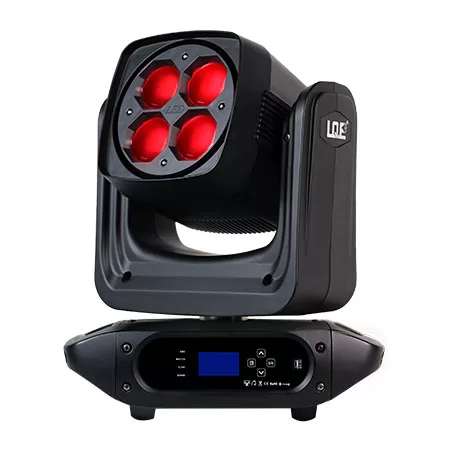
LED Moving Head Stage Wash Light LW200Z
The versatile moving head stage light provides a powerful lighting solution for theaters, concerts, and large outdoor performances. Suitable for theaters, TV stations, entertainment stages, and large outdoor performance scenes.
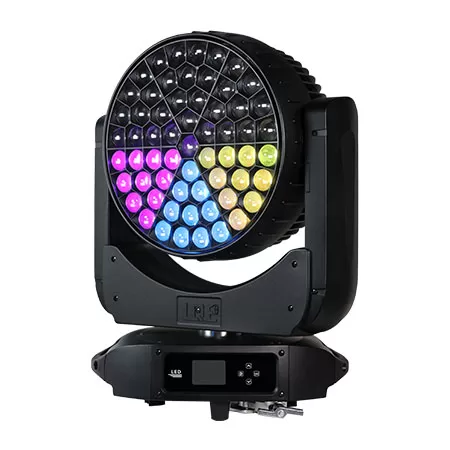
1000w 61x40w RGBW Stage Moving Head Wash Light LW1000
1000W 61x40W LED RGBW Mulichips Moving Head Wash Lights with Zoom (5°–50°), Covering Large Range and Long Distance. Designed to deliver a 5°–50° ultra-large zoom range to achieve a greater wash effect, illuminating stages and events with stunning lighting effects.
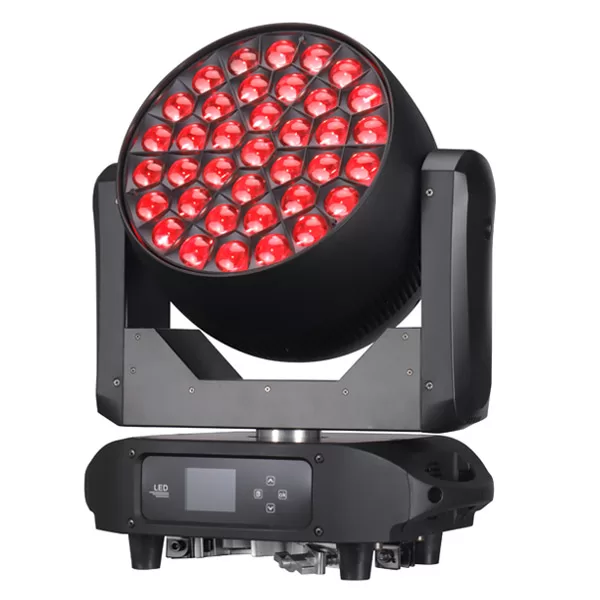
800w 37x40w RGBW Stage Moving Head Wash Light LW800
800W 37x40W LED RGBW Mulichips Moving Head Wash Lights with Zoom (5°-50°), Covering Large Range and Long Distance. Designed to deliver a 5°–50° ultra-large zoom range to achieve a greater wash effect, illuminating stages and events with stunning ring control lighting effects.
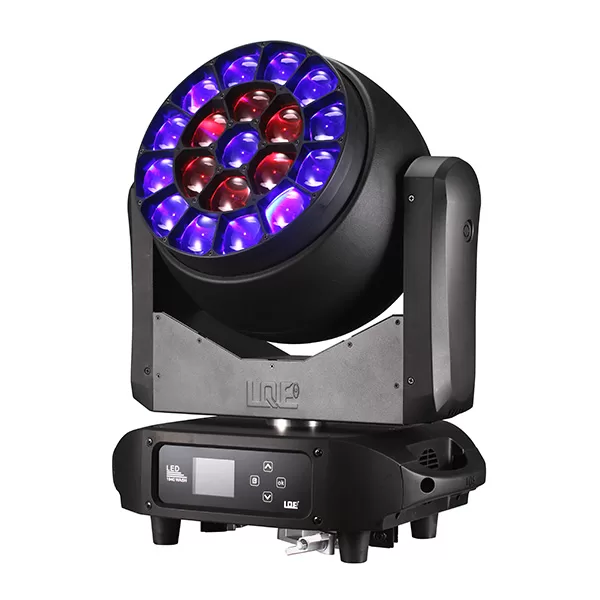
600w 19x40w RGBW Stage Moving Head Wash Light LW600 Zoom IP20
600W 19x40W LED RGBW Mulichips Moving Head Wash Lights with Zoom (5°–50°), Covering Large Range and Long Distance. IP20: Designed to deliver a 5°–50° ultra-large zoom range to achieve a greater wash effect, illuminating stages and events with stunning ring control lighting effects.

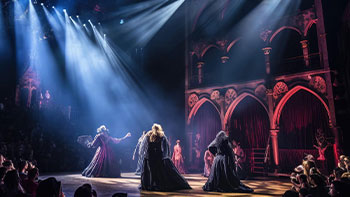
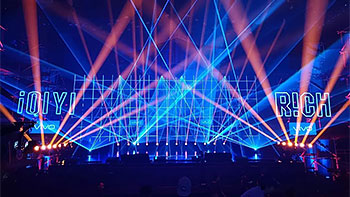
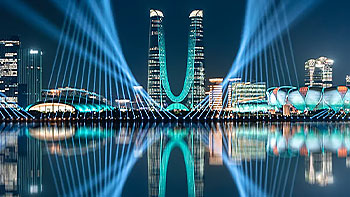
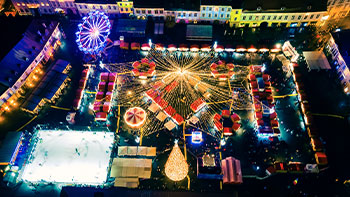
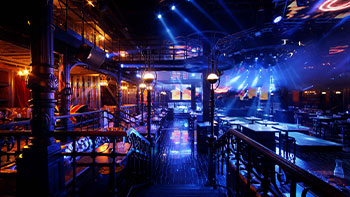
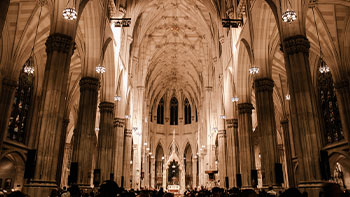






Linkedin
YouTube
Whatsapp: +8618924548390
TikTok